News
Episode 1: It’s Crazy How Quickly You Can Get So Far From Land
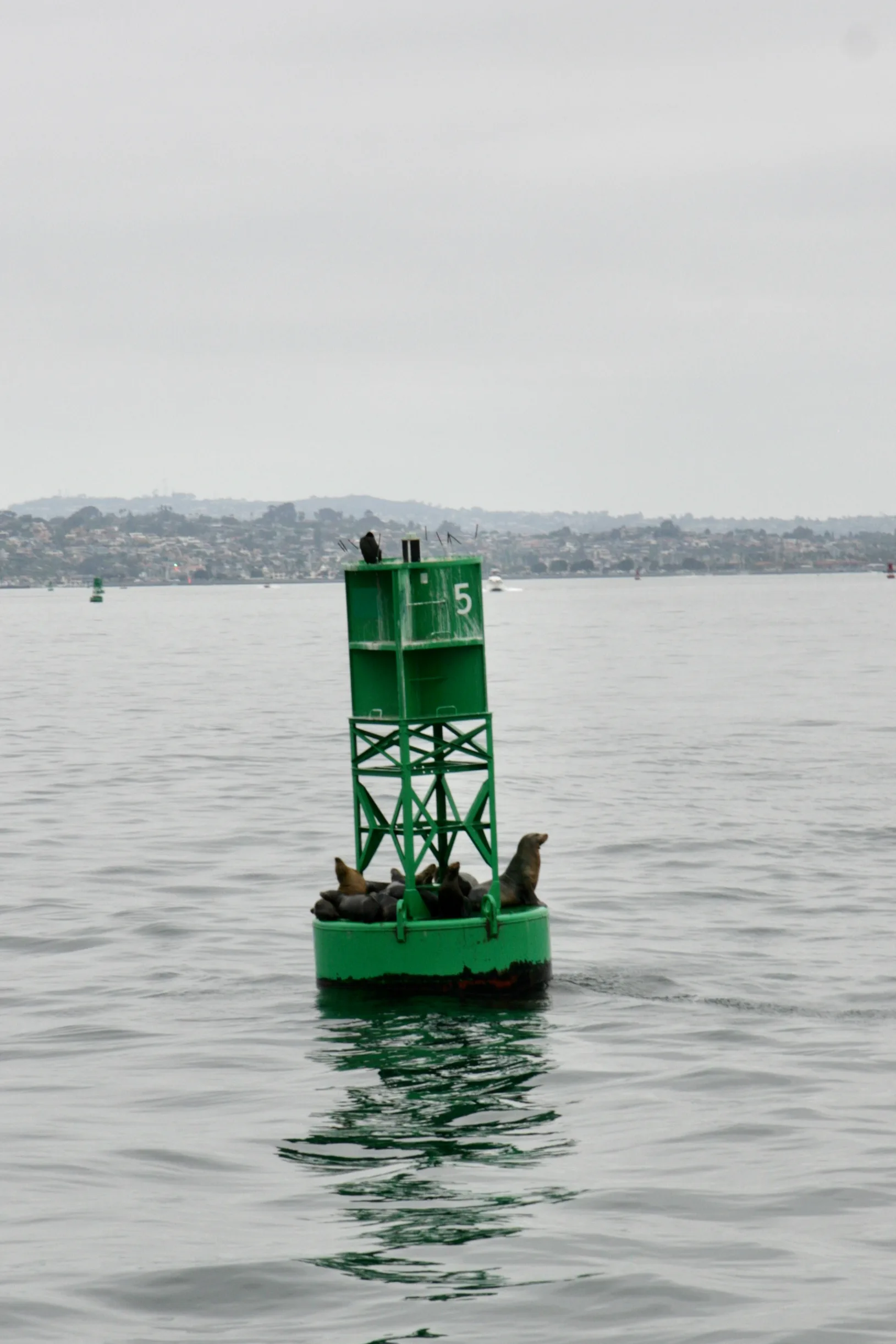
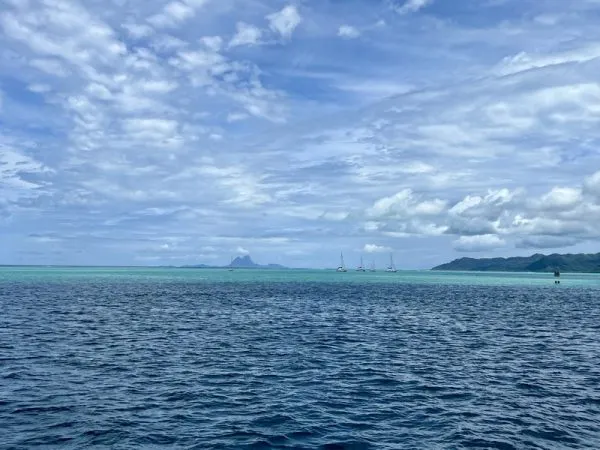
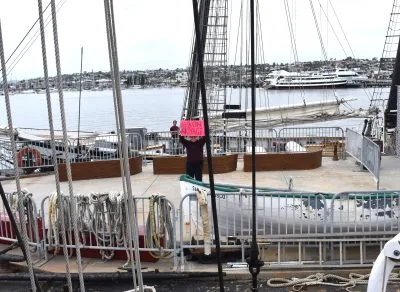
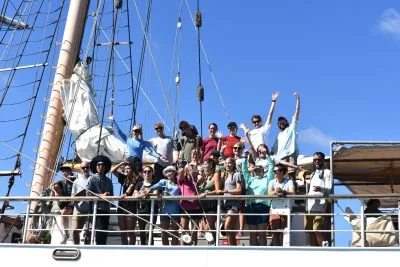
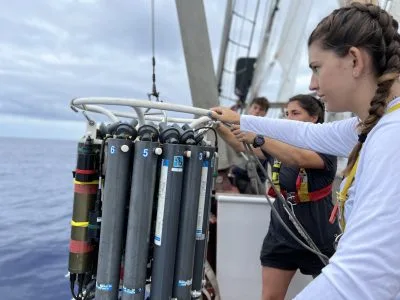
Welcome aboard to Stories at SEA, a podcast documenting SEA’s Ocean and Climate voyage from San Diego, CA to Papeete, Tahiti in the fall of 2022. We start the episode thinking about what it was like to leave San Diego. After a few days spent at the dock provisioning and preparing the ship, it was a cathartic moment to wave goodbye to Morgan Hayman’s parents who came to the dock with “Bon Voyage” signs. Oh wait. First, we got fuel, and then we did safety drills, and then we anchored for the night. But the next morning, we finally left land behind. Emily Rogers felt that it was surreal to be leaving, and Morgan said, “We looked behind us for 20-30 minutes, and then everyone turned around, basically said bye, and looked forward.” We were off!
Getting accustomed to the routine of a moving ship was a learning process. On top of learning a new schedule and tasks, everything moved all the time! Simple tasks required lots of balance and patience, but if you approached it the way Kris Riddle did, it could be lots of fun. The watch system began shortly after leaving San Diego. There were three watch groups – A, B, and C – and four watch times which meant we all rotated through standing watch at different times. That meant we slept and woke up at all hours, and I know I got very good at taking naps. In this episode, we hear from several students about what daily life was like. A note about Lexi Valachovic’s segment, I was usually the person to wake Lexi up, actually, and the balance between whispering, so as not to wake other people up, and being loud enough, so that Lexi could actually hear me, was a difficult one!
We also hear from Stella Streufert talking about standing dawn watch while in lab. An activity particular to dawn watch was coming up with the science report. Every dawn watch (0100-0700) the Chief Scientist wrote a question for the watch group to answer. Some examples were: what is diel vertical migration, how does bioluminescence work, or my favorite, what is an atoll? The group spent time during watch coming up with an answer and created a short presentation for class. There was even a special song we sang that introduced the science report, but you’ll have to hear that one in person!
Let’s turn to the lab. In this episode, we talk to Micah Strike who was researching the connections between the abundance of phytoplankton, microscopic sea plants, the abundance of zooplankton, slightly larger but still microscopic animals, and myctophids, small fish that swim in the open ocean. Micah mentions abiotic a few times which means non-living and pelagic which means open water. Ali Fox and her group did an incubation experiment where they were trying to grow phytoplankton in environments that contained different amounts of nutrients to determine what conditions facilitated phytoplankton growth. Ali talks about the deep chlorophyll maximum which is exactly as she says, an area in the ocean where there is assumed to be lots of phytoplankton because of high levels of chlorophyll. These areas of high phytoplankton abundance are usually controlled by currents bringing lots of nutrient-rich waters closer to the surface. Lastly, Rikki Held was in a group examining the relationship between the top layer of the ocean and primary productivity, and planned to study this in the different areas of the ocean we’d be sailing through. Later in the show, we’ll check back in with these students to learn about how their projects are progressing.
As I developed the podcast project, I spent a lot of time listening to published podcasts which was both daunting and a good source of ideas. One of my favorites is the Moth because I like the format and raw emotion in the stories. I wanted the Ocean Moments section of each podcast to sound Moth-esque, a little detached from the rest of the episode, with few interruptions from me, highlighting honest, original stories. In this episode, we hear Stella Streufert talk about Puget Sound, Parker Rehmus describe kayaking on the West Coast of British Columbia, and Henry Hua talk about horseshoe crabs on Plumb Beach in New York City. As I put the episode together, I realized these three stories were set close to home for Stella, Parker, and Henry; a point made even more poignant set against the foreign environment we all found ourselves in at the end of the first week over 900 miles away from land.
And that’s it for this episode of Stories at SEA! Next week, we’ll talk more about student projects, hear about a swim call, sail through the Intertropical Convergence Zone, and get drenched by a few squalls. Thanks for listening and fair winds! Many thanks to Morgan Hayman, Lexi Valachovic, Emily Rogers, Calvin Lucido, Stella Streufert, Kris Riddle, Ali Fox, Katie Power, Micah Strike, Parker Rehmus, Henry Hua, and Rikki Held for sitting down to chat with me for this episode, to the entire crew of the Robert C. Seamans for letting me take time each day to interview in the aft cabin, and to Dr. Sarah Kingston for her photograph that was the inspiration for the podcast cover art.